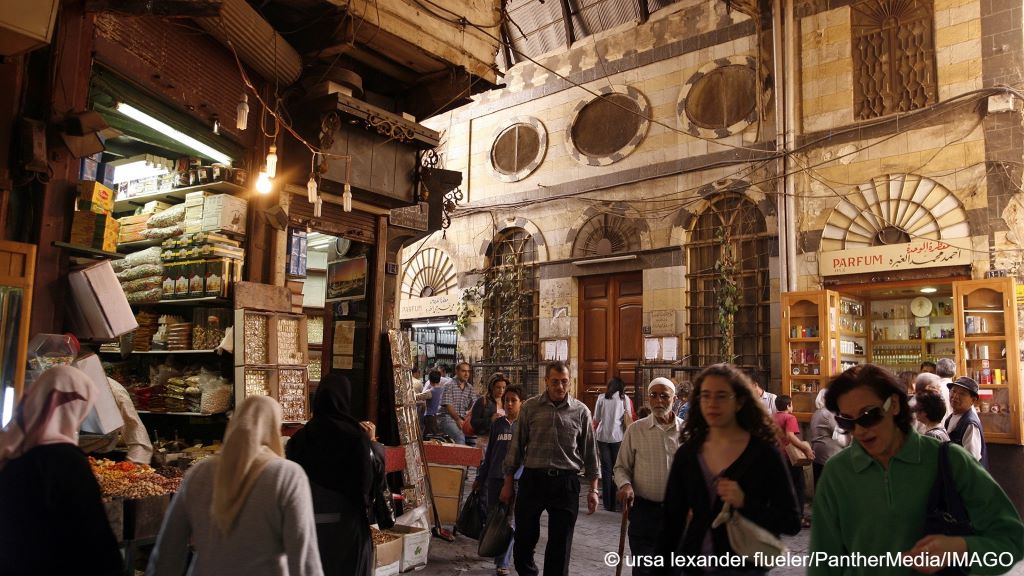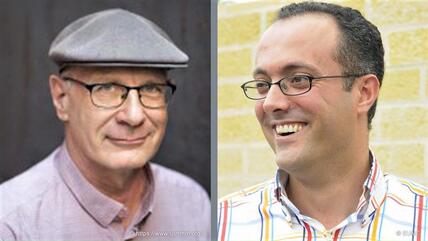A heavy burden

As you start reading this novel, you soon get a creeping sense of confusion. Life is chaotic in the middle of old-town Damascus, where families with a lot of children are squeezed into tiny apartments. People try to improve their situation by building extra rooms onto their flats in the inner courtyard, erecting new walls, or simply putting up tents.
The Shamaya Palace of the book’s title, a magnificent nineteenth-century house originally built by a rich Jewish family, is home to nearly fifty families who live on several of its floors.
One of these families is Ahmad’s. As a child playing with the others, he is never aware “that we lived in a part of the city whose diverse, mosaic-like composition represented a melting pot of different religions, ethnicities and cultures”.
But early on he does realise that his family are penniless refugees, reliant on state support. He avoids inviting friends over, ashamed of his family’s poverty. As the son of someone who takes in ironing he is the object of scorn from wealthier classmates, but he learns to stand up for himself and is a keen observer of his surroundings.

Longing for the lost homeland
But Ahmad is not the central character in this novel, which consists of many short chapters each representing a self-contained episode. Other people and families who play a part in Ahmad’s life move into the foreground, like Rasha, a neighbour’s daughter who has a similar start in life to Ahmad.
But things soon change for her when one of her brothers flees the country and finds work in the Gulf state of Qatar, from where he supports the family financially. We drop in sporadically on Rasha’s eventful later life as well as Ahmad’s, but we also meet a whole cast of other people from the Shamaya Palace and old-town Damascus.
The link between all the protagonists and minor characters is their longing for a lost homeland; they imagine returning, and dream of the situation improving in the countries they call home – in particular Palestine.
For the time being, they try to find a second home in the Shamaya Palace, and some even manage to keep their goats here in these cramped conditions. A friend of Ahmad’s who lives in a Christian church and takes part in the services there describes the place in these terms: “At once I had the feeling I’d been catapulted into another world by magic, into a cosy, warm and simple world.”
Kaleidoscope of human lives
At times, this friend takes over the narration, which is confusing at first, since the author never signals the switch. The wealth of characters and the variety of episodes that sometimes end in tragedy and sometimes lead to success, however, justify this polyphonic approach. The author’s main aim is to create a multicoloured kaleidoscope of human lives, diametric paths that all begin in the old town of Damascus.
The Shamaya Palace is the magic heart of these stories and an emblem of all these difficult lives. An unpleasant smell of rubbish, bones and spoiled milk pervades its once opulent hallways and rooms, a mixture “that we might describe as the odour of the Shamaya Palace.”
As the novel goes on, it becomes increasingly clear that the protagonists’ lives are not going to get any easier. Some of the young men (including Ahmad) join the Palestinian resistance and, as members of the “fedayeen”, carry out attacks on Israeli territory, are arrested, tortured and sentenced to many years in jail. Others move far away from their Arab homeland, though without ever quite escaping their past.
After finishing university, Rasha even manages to convince her Arab husband to move to the USA with her, but the marriage is unhappy and their sons distance themselves from her and the western lifestyle, and adopt Islamist views. Another friend of Ahmad’s who lives in Paris falls apart and becomes a drug addict.
This generally pessimistic view of the consequences of migration and the difficulties of integration gives the novel an air of melancholy. Al-Kurdi takes a critical look at why so many people in life are unable to break away from unhappiness and failure.
In the end, we come back to Ahmad, who has gained a certain maturity and makes a plea for the simple life: “Were we really fighting windmills like Don Quixote?” The idea softens his personal failure and categorises it as a general human fate.
Volker Kaminski
© Qantara.de 2023
Ali Al-Kurdi, "Der Schamaya-Palast" – The Shamaya Palace, translated from the Arabic by Larissa Bender, published in German by Wallstein
Ali Al-Kurdi, born in Damascus in 1953, is a Palestinian writer and journalist. He now lives in Weimar.
